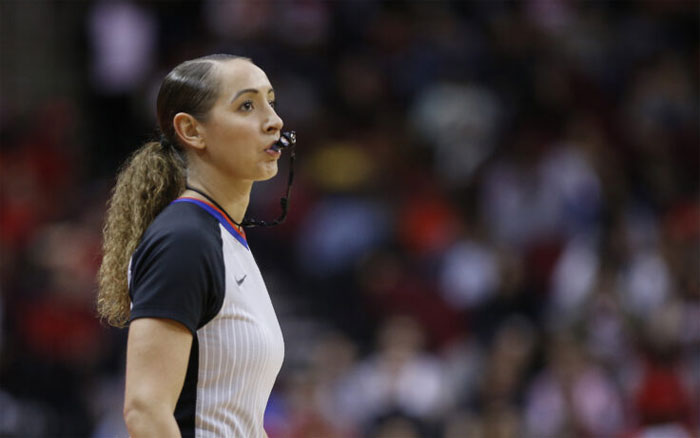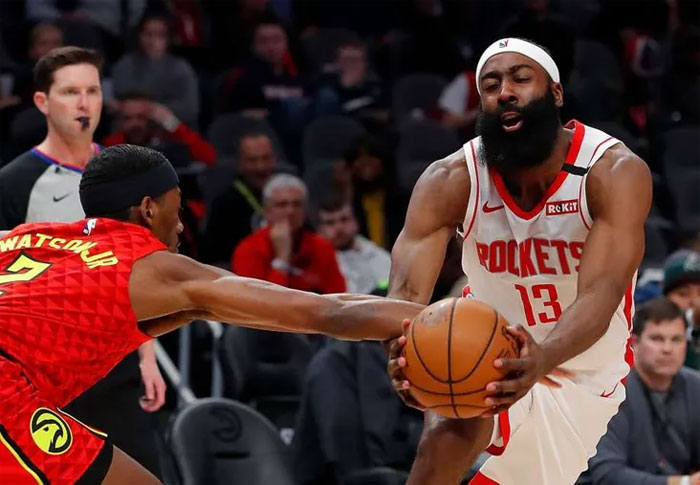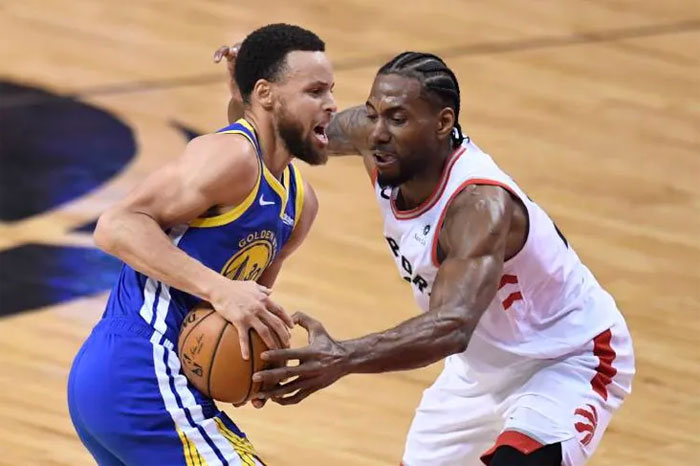Do you love basketball yet find some rules confusing? Do you dream of becoming prominent in the world of the NBA but don't know where to start? If yes, then you've come to the right place.
Since its establishment, basketball evolved from just a pastime to a sport where millions are interested, watching championships with their favorite teams playing against each other. Of course, there will always be rules, and rules are there to be followed.
We know you're wondering whether or not a particular move in basketball is illegal. Worry no more because we'll try to answer your questions regarding reach-in fouls. Read until the end, so you're not at a loss for basketball rules.
Definition of Reach-in Foul
A reach-in foul occurs when the one defending the ball touches the offense's body. A reach-in foul happens in an attempt to steal the ball. This reach-in foul can be intentional or unintentional.
Most of the time, the referee has the final say of when the defense commits a personal foul or not. Years of basketball experience made them look into players' fast-paced playstyle.
One thing to consider is if the defense impedes the offense's movement, or if the move made the defense influence the offense's stance, balance, or speed.
According to NBA official rules, a referee should call upon moves that include pushing, holding, or unnatural movements. So, the reach-in foul is not in the rulebook.

A personal foul occurs if a player touches the opponent's arm, hand, knee, or legs. If there is no shooting attempt yet, the referee grants the ball to the violated player's team.
On the other hand, if the defense commits a foul, the referee allows the offense a free throw if the foul occurred when shooting the ball. The rulebook calls this a shooting foul.
Despite this, not all pushes are a reach-in foul. While making an effort to snatch the ball from the offense, if the defense charges his body and knocks the offender, it is not a "reach." Not all reaches are reach-in foul.
For example, a defender's stance by reaching out his hand without touching the offender is not foul. A rule of the thumb is that reach-in fouls only occur if there is contact, it hurts and impedes the opponent's balance, or the defense tries to reach the ball.
Examples of a Reach-in Foul
For everyone to enjoy the sport, everyone must practice sportsmanship. Moreso, all players need to follow the rules. Playing basketball is no exception. Your opponent has a personal space you cannot invade, even if basketball is a contact sport.
Personal Space Defined
When you reach in for the ball, you must imagine borders around your opponent. More often than not, a referee will call for you if you cross that line.
Try visualizing this: your opponent makes an offensive stance, hand, or elbows. Whichever one projects the farthest is the boundary for his personal space.
Once you restrict their movement, it may be that they're about to shoot, pass, or dribble and you touch your opponent illegally. For instance, you slapped their hands or elbows. Then it's a reach-in foul.
One exemption is the offender's back when facing the ring. However, officials consider it foul when a player on defense slapped down the ball (when the offense is holding it or picking it up when dropped). It is not a reach-in foul.

The exemption applies to holding elbows or hands while the offense is in the lower defensive box. A lower defensive box lies near and under the ring. The last act is an exemption if the defender's actions do not affect the offense's speed, agility, stance, and balance.
On the contrary, let's tackle another example: if a defensive player hits the offense's knee with his hand. It's reaching beyond the personal space simultaneously impedes the offender's progress. Hitting the knee may also cause the offense to have an injury.
But take note that a flagrant foul is different from a personal foul in that the former can bring about harm. A flagrant foul is a type of personal foul. All flagrant fouls are personal fouls, but not all personal fouls are flagrant fouls.
Last but not least, if the offender has the chance to dribble, pass, or shoot (aka triple threat), then the defender misses the opportunity to slam the ball. Instead, he touched the offense's hand or arms; it is also a reach-in foul.
Difference Between Reach-in, Charging and Blocking Foul
A charge is an offensive foul. Charge happens when the ball handler makes contact with a defender in position. On the other hand, a block is the opposite. It is a defensive foul caused by the player out of position while defending.
However, a block doesn't require reaching in as it may only need the defense to be in place.
More about charging and blocking here.
Helpful Strategies to Not Commit Reach-in Foul
A specific guide read by a team of researchers states that "reaching in" is not a foul. They are both correct and wrong. First and foremost, the term reach-in is not in the official NBA rulebook.
On the contrary, fans and basketball experts alike coined the term reach-in foul as not "reach-in" in essence. "Reach-in foul" involves an attempt to reach in, but reaching in by itself is not a foul. As stated above, one must impede the opponent's movement to commit a reach-in foul.
The referee grants one free throw if the offender happens to shoot the ball into the ring. If it did not, the referee gives two free throws to the offense side. It would be three free throws if the offense attempted to shoot beyond the 3-point line.
However, some players commit 5 (5 for NCAA, 6 for NBA) fouls in a game. Players were committing more fouls than intended means that officials would eliminate or disqualify a player in the game. To prevent that, here are some tips to avoid having fouls.

A defending player may steal the ball by slapping it upwards while the offender dribbles. It catches the offense by surprise and, at the same time, avoids invading the opponent's personal space.
If the ball handler makes a spin move, you could steal the ball from him when he switches hands.
But remember, a successful attempt on this relies on how the handler correctly executes the move. If he makes a spin move correctly by guarding the basketball with his body, then you'll have less chance of stealing the ball. Timing and practice are the keys.
Gear You Might Need
According to Fine Magazine, your basketball shoes can make a difference in your gameplay. Shoes that are too loose may affect movement, while shoes that are too tight can form blisters on your feet.
One way to keep your cool in-game and prevent mental breakdowns while playing is to have proper basketball gear. You may check this product on Amazon to level up your performance while playing.
How Enthusiasts Coined the Term Reach-in Foul
Around the 1990s, the NBA thought the ball defender had more advantage than the opposing team. It would be unfair for the offense side to be at the losing end when the defense got more rights regarding fouls.
Even though no one read or heard reach-ins in the official rulebook, circumstances around the defensive side were too biased before. The NBA added rules about personal fouls to allow movement and scores for the offense. Impeding freedom such as touching and restricting speed, agility, and balance is illegal.
In one match LeBron James fought against Stephen Curry, a commentator coined the term "reach-in foul."
Exciting Facts About Reach-in Foul
The NBA record holder for most fouls is Kareem Abdul-Jabbar. He committed 4657 personal fouls in his entire career.
However, this doesn't mean that he's a bad player. The Naismith Honors Committee inducted him as a Hall of Famer twice, in 1995 and 2007, respectively. His seven feet two inches center made him a recognizable figure because of his signature skyhook move.
Meanwhile, twenty-five players committed zero fouls per minute in their whole careers. The first three are Marko Simonovic, Vit Krejci, and Kai Jones.
Conclusion
To sum it up, a defensive player does reach-in fouls when he restricts the offensive player's movement, position, or speed.
The word reach-in foul is not in the official rules but rather fans' coined word only to tell if a player tried to reach in. In essence, though, not all literal reach-ins are foul by themselves. The defensive side must have physical contact with the handler of the ball to tell that it is a reach-in foul.
An athlete's gear significantly affects his performance, so the research team would like to recommend basketball shoes to prevent a reach-in foul from happening and the referee getting a player called.
We hope you have learned what a reach-in foul is through our article. Remember that reading helps, especially if you have questions in mind. What's more effective is constant practice. As Michael Jordan said, "Everybody has talent, but ability takes hard work." Good luck and stay safe.
